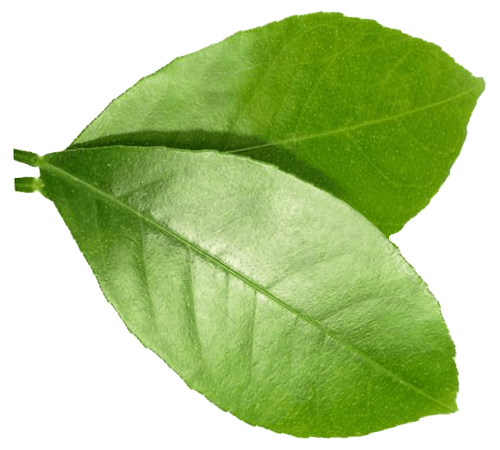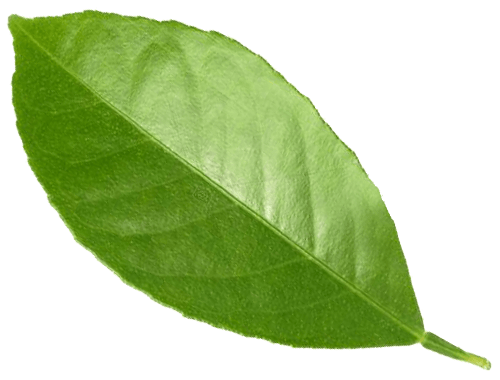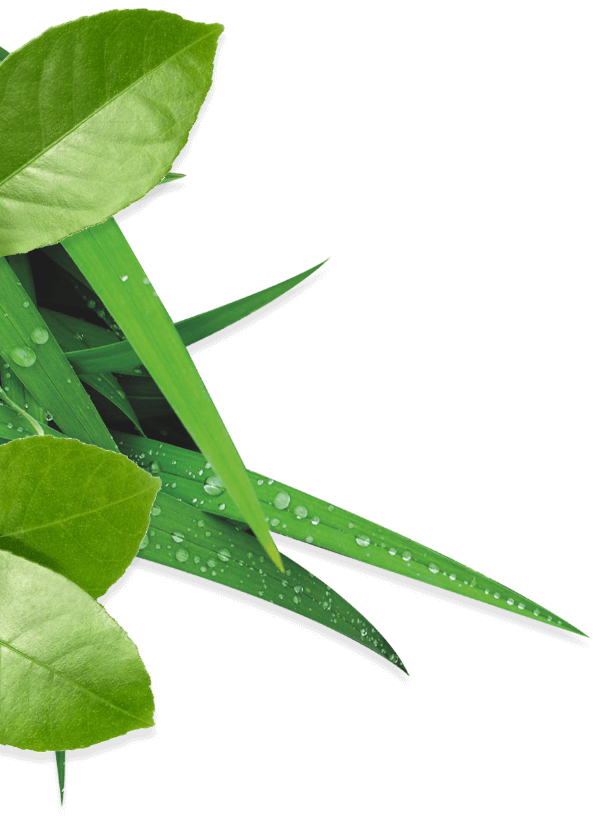

No matter where you are in Thailand, a place to eat is rarely more remote than a hundred yards. Thai people eat many small meals throughout the day, such as kuay tiew (Thai noodle soup) or kow man kai (ginger rice with boiled chicken and fresh broth). Delicious!
In addition to small meals, there is also the enjoyment of sumptuous Thai dining with family and friends. Cooking a Thai meal mainly comes down to choosing the dishes that have the most variety in spicing and preparation.
What makes Thai cooking so special is the fresh, sophisticated and refined taste, despite the use of strong-tasting spices. These fresh spices are the main seasoning of Thai cooking.
When a Thai goes to the market to purchase, she first and foremost checks out the offer of spices and vegetables. In a later stadium, the offer of meat and fish comes into the picture. That’s the world turned upside down when you compare it to our western way of cooking, in which the piece of meat or fish is our starting-point.
A Thai word for eating is ‘khin khao’, or ’eating rice’, which shows the importance of rice for the Thai. It is not surprising that Thailand is the number one exporter of rice in the world.
About two-thirds of Thais live in the countryside, meaning that rice seasons greatly mark Thai life. The cultivation of rice is a joint undertaking for a family or community. During the demanding periods of the rice season (sowing, planting and harvesting) the whole community drops their normal activities: school children, a taxi driver in Bangkok and even shop-owners all become farmers.
What makes Thai cooking so special is the fresh, sophisticated and refined taste, despite the use of strong-tasting spices.
These fresh spices are the main seasoning of Thai cooking. When a Thai goes to the market to purchase, she first and foremost checks out the offer of spices and vegetables. In a later stadium, the offer of meat and fish comes into the picture. That’s the world turned upside down when you compare it to our western way of cooking, in which the piece of meat or fish is our starting-point.
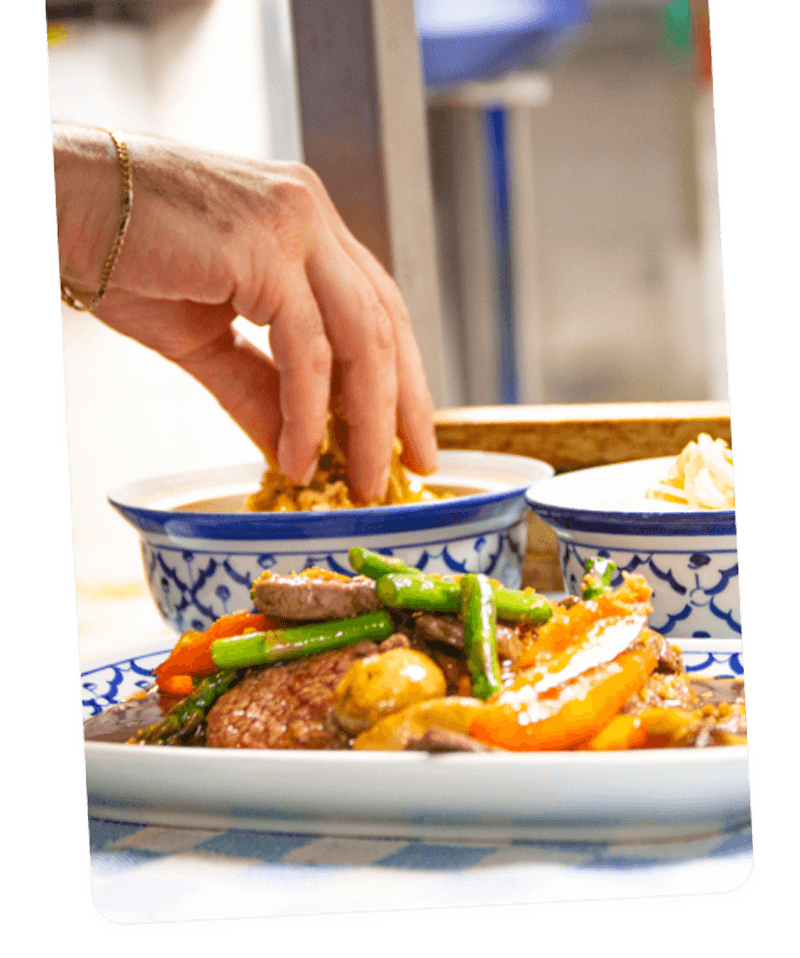
The balance between the used spices is of great importance. Not too much of one thing, not too little of another. While preparing a meal it constantly comes down to finding the right balance between salt and sour (Thai soup) or sweet, salt and sour (wok dishes, Thai curries and salads). Sometimes a small amount of bitter is added, as is done in the mashed burned raw rice in the laap Isaan (a North-East Thai salad).
Due to the short preparation time the taste of fresh herbs and vegetables is remarkably well preserved. Typical Thai vegetables are for example Thai eggplant and bamboo. Leaf coriander, garlic, bai kra prow and bai hoh ra paa (Thai basil herbs) green and red pepper, lemon grass, Laos (ginger root), lemon leaf and mint are some of Thailand’s typical herbs. Finally the dishes are flavoured with fish sauce, oyster sauce, chili sauce, coconut milk, lemon and/or sugar.
Experience taught us that the taste of fresh leaf coriander is an acquired taste. This herb is particularly used to season the soup (tom yam and tom kha) and some salads. It is possible to omit coriander if you prefer.
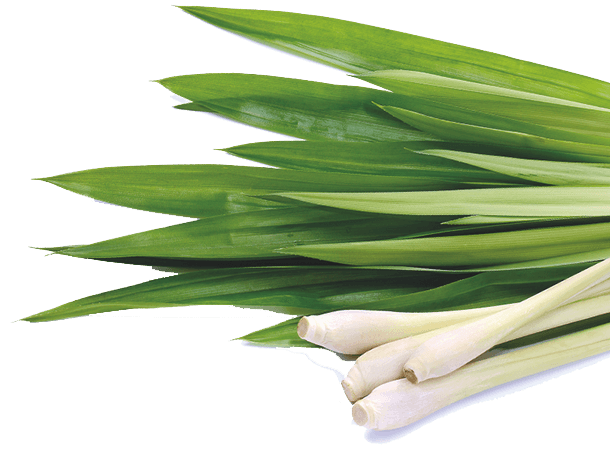

Originally, the Thai cuisine knows three cooking methods: stewing, stir frying and grilling. A ‘complete’ Thai meal consists of a soup, a curry, a dip with fish or vegetables and of course cooked rice. A salad can be ordered instead of the curry but is usually served as a side dish.
It is important that the flavours are sufficiently varied, in seasoning as well as in spiciness. When for example a soup is ordered extra spicy, the curry should be mild. By the way, the dishes aren’t served in courses during the meal in Thailand, but are served at the same time. This makes it possible to experience several tastes in a meal at once.
Curry has kind of a bad reputation in the West. Sometimes guests make remarks about their distaste of curries. As it usually turns out they are unfamiliar with this phenomenon. In a well-prepared Thai curry one can find everything that makes Thai food so tasty and special.
A Thai curry distinguishes itself from curries from other countries by the ingredients. Instead of grinded or crushed dry herbs, Thai cuisine uses fresh herbs. A simple Thai curry paste (a kind of herb mixture, which serves as a basis for the curry) consists of dried peppers, shallots and prawn paste. One can also add garlic, coriander root, Laos, lemon grass and/or lemon peel to more complex curry pastes.
Many curries are prepared by baking or by adding oil or coconut milk to the curry paste. When the sauce is done, the meat or fish, vegetables such as bamboo or Thai eggplant and fresh herbs as Thai basil or lemon leaf are added. The ‘kaeng paa’ (jungle curry) however, which can sometimes be found on the menu, is one example of curry that is prepared without coconut milk.


